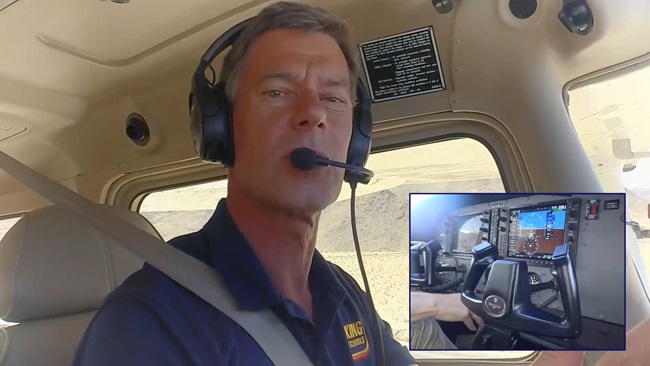
Norman sets a fly-in record
Oklahoma event welcomes scores of visitors
By Mike Collins
Near-perfect weather conditions helped to draw some 500 aircraft, and more than 7,500 people, to the University of Oklahoma Westheimer Airport in Norman on Friday and Saturday, September 8 and 9, for the second of AOPA’s four 2017 regional fly-ins. The airport held its eleventh annual Aviation Festival on Saturday morning, in conjunction with the fly-in. The Norman event sets a record for the highest attendance of any AOPA Fly-In, although the Bremerton, Washington, Fly-In in August 2016 still holds the record for the most aircraft.
Like all of AOPA’s 2017 Fly-Ins, the Norman event actually began on Friday with a series of all-day workshops. One of the workshops, Understanding Aviation Weather, leveraged Norman’s proximity to the National Weather Center, located on the south side of the University of Oklahoma’s sprawling campus in Norman. “I never thought about the weather until I became a pilot,” said Elizabeth Kummer of Dallas, a pilot for nine years who flies a Piper Archer. She said she enjoyed the variety of topics. “It’s interesting to see how they develop the [different weather] products.”
A cadre of volunteers stayed busy Friday parking aircraft and cars, and completing myriad other tasks required for the event to succeed. “I’m a rusty pilot. I figured this would be a good way to get back into it,” said volunteer Mike Klatt of Norman, who learned to fly as a University of Oklahoma student. Klatt, who said he hasn’t flown in 10 years, signed up for a Rusty Pilot seminar during the fly-in.
Saturday morning’s pancake breakfast began with AOPA President Mark Baker introducing Doug Jackson of Operation Airdrop, a nascent organization recently formed to facilitate general aviation transportation of urgently needed supplies to hurricane-ravaged areas of Texas. “We’ve had over 500 flights so far. The response has been overwhelming,” Jackson said. More than 150 aircraft—some from as far away as Virginia, Minnesota, and Mexico—have delivered 250,000 pounds of supplies. Airplanes have ranged from Piper Comanches to a Douglas DC–3.
During the day Saturday, guests could choose from a wide variety of seminars, static display aircraft, the exhibit hall, and the AOPA Village. The University of Oklahoma’s Sooner Flight Academy—which runs aviation-themed summer camps in Norman—offered special activities for young people all day.
At noon many eyes were on the skies for AOPA’s first short takeoff and landing demonstration, the Texas STOL Roundup flight demonstration, for which Phillips 66 Aviation was the presenting sponsor. The team behind the Texas STOL Roundup demonstrated both its unique Obstacle STOL event, using inflatable pylons to represent that 50-foot obstacle frequently referenced in pilot’s operating handbooks, and traditional or Valdez-style STOL competition procedures. Twelve aircraft participated. A seminar on Saturday morning covered important aspects of STOL operations and backcountry flying techniques.
During the afternoon’s Pilot Town Hall with AOPA President Mark Baker, which concluded the fly-in, Baker and senior AOPA leadership discussed GA safety, BasicMed, and AOPA’s You Can Fly initiatives. But the audience seemed especially interested in the status of H.R.2997, also known as the 21st Century AIRR Act, the legislation that seeks to privatize the U.S. air traffic control system.
“We have the best system in the world. I’m still trying to figure out where it’s broken,” Baker said. “It’s about control—and it’s about the money.”
Email [email protected]
Member Products and Services: Ask Jim
Borrowing an airplane? Read this first
By Jim Pinegar, AOPA Insurance Services
Q: I own and insure my airplane, but want to borrow a friend’s. Do I need more insurance?
A: I was in the same situation last summer when I wanted to borrow a friend’s Mooney to complete my commercial checkride. At that time, I owned a Cessna 172, but needed access to a complex aircraft for a brief time. Luckily, most of our insurance policies include “nonowned” or renter’s insurance as a part of the owner’s aircraft policy. And, better news yet, most of the time this is included for free.
Look for the section labeled something to the effect of “use of other aircraft.” This section will define exactly what’s covered for both liability and physical damage to the borrowed or rented aircraft. This does not mean you can go and rent a jet or helicopter—unless that is what you own and insure on your policy. Typical restrictions include a maximum of six seats, a 300-horsepower engine, and the borrowed/rented aircraft must be in the same category and class—and for the same use—as your insured aircraft. Gear configuration is typically not a restriction, but review your policy. I imagine you’ll be pleasantly surprised that this complementary coverage is fairly broad.
Jim Pinegar is vice president of the AOPA Aviation Insurance Co. and owns a Cessna 172. Have questions? Email [email protected]
Pilot Protection Services: Legally Speaking
How a hangar or tiedown lease could affect your insurance
By Jared Allen
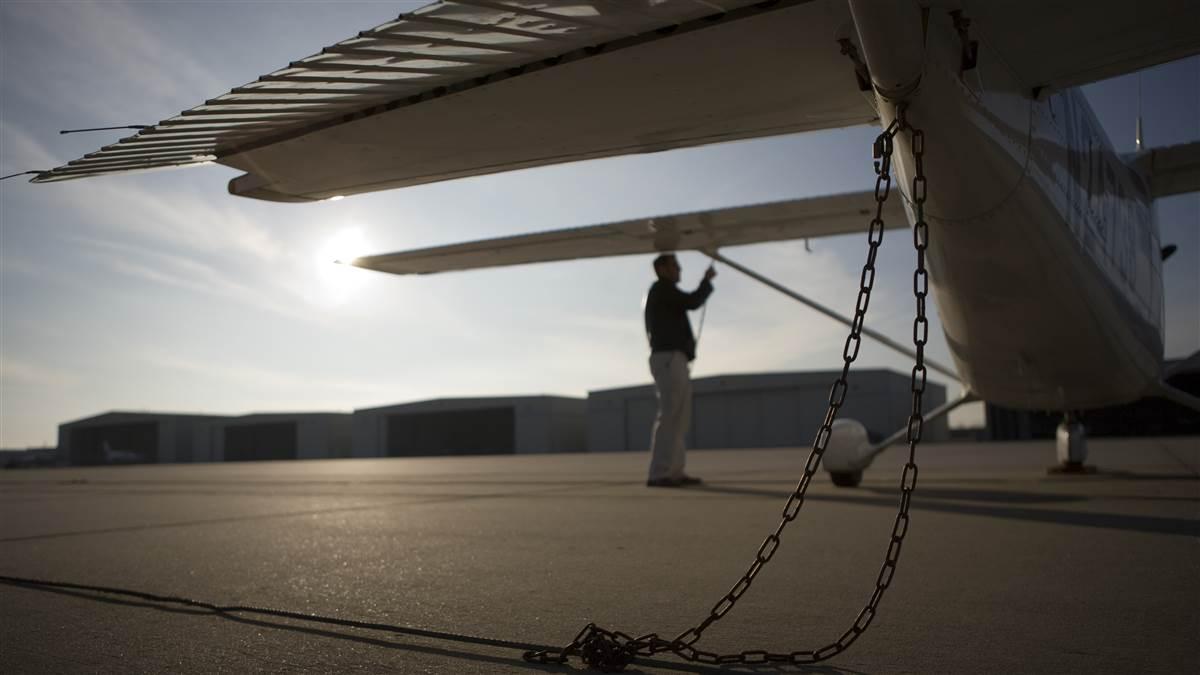 If an airport operator, fixed based operator (FBO), or other landlord has asked you to execute a hangar or tiedown lease agreement, be aware that certain provisions could affect your insurance coverage or require modification of an existing policy.
If an airport operator, fixed based operator (FBO), or other landlord has asked you to execute a hangar or tiedown lease agreement, be aware that certain provisions could affect your insurance coverage or require modification of an existing policy.
Many aircraft owners may be familiar with hangar or tiedown leases that require
aircraft and general premises liability insurance, as well as automobile insurance for any vehicles operated on the airport. These provisions often specify minimum limits of liability, require the landlord to be named as an additional insured, and require proof of insurance to be provided upon request.
Less familiar, however, may be inconspicuous provisions requiring the renter to hold harmless or indemnify the landlord and their employees from any liability, damages, or legal fees concerning the leased premises. Other obscure terms may mandate that any insurers waive all rights of subrogation against the landlord, preventing the insurer from recovering the costs of a claim caused by the landlord.
Since many insurance policies specifically restrict the insured’s ability to agree to additional risks or waive rights of the insurance company, agreeing to hold harmless, indemnification, or subrogation clauses in a lease could jeopardize the policy’s effectiveness and even result in the denial of a claim.
For these reasons and many others, it is important to review any proposed lease along with your insurance policy and coordinate appropriate coverage with your insurance company. While insurers can typically amend policies to accommodate the terms of a lease, doing so may increase premiums in certain circumstances. In some cases, the lease terms may need to be negotiated. Before signing a hangar or tiedown lease, have it reviewed by an experienced attorney.
Jared Allen is an in-house attorney with AOPA’s Legal Services Plan and an instrument-rated private pilot (www.aopa.org/pps).
ASI News: VFR into IMC accidents—what can we learn from them?
‘In Too Deep’ exposes troubling decision making
By Machteld Smith
 The danger of continuing a flight under visual flight rules into instrument meteorological conditions (IMC) is well known, yet in most years, nearly half of all weather-related accidents result from VFR flight into IMC. NTSB investigations reveal that the majority of these accident pilots—whether or not the pilots were instrument-rated—made the decision to launch, or continue, into weather that was clearly inappropriate for their skills or the flight rules under which they chose to operate. Why?
The danger of continuing a flight under visual flight rules into instrument meteorological conditions (IMC) is well known, yet in most years, nearly half of all weather-related accidents result from VFR flight into IMC. NTSB investigations reveal that the majority of these accident pilots—whether or not the pilots were instrument-rated—made the decision to launch, or continue, into weather that was clearly inappropriate for their skills or the flight rules under which they chose to operate. Why?
Perhaps an example of such a flight can offer insight:
On the morning of November 26, 2011, a pilot, his two college-age daughters, and the younger daughter’s boyfriend boarded a Cirrus SR20 and took off from Marion, Indiana, to return the older daughter to her college near Chicago. Two hours later and 200 miles northwest, the aircraft exited a low overcast in a near-vertical dive and disintegrated when it hit the ground.
Accident Case Study: In Too Deep looks at the thought process that caused the pilot to wander into this dangerous territory. The video brings to light events leading up to the tragedy as it pieces together the ill-fated flight with actual audio of the pilot’s discussions with air traffic control and information from the NTSB accident report. Please help ASI promote safety by sharing this accident case study with other pilots.
Machteld Smith is an aviation technical writer for the AOPA Air Safety Institute.
Owner maintenance
By Craig Brown
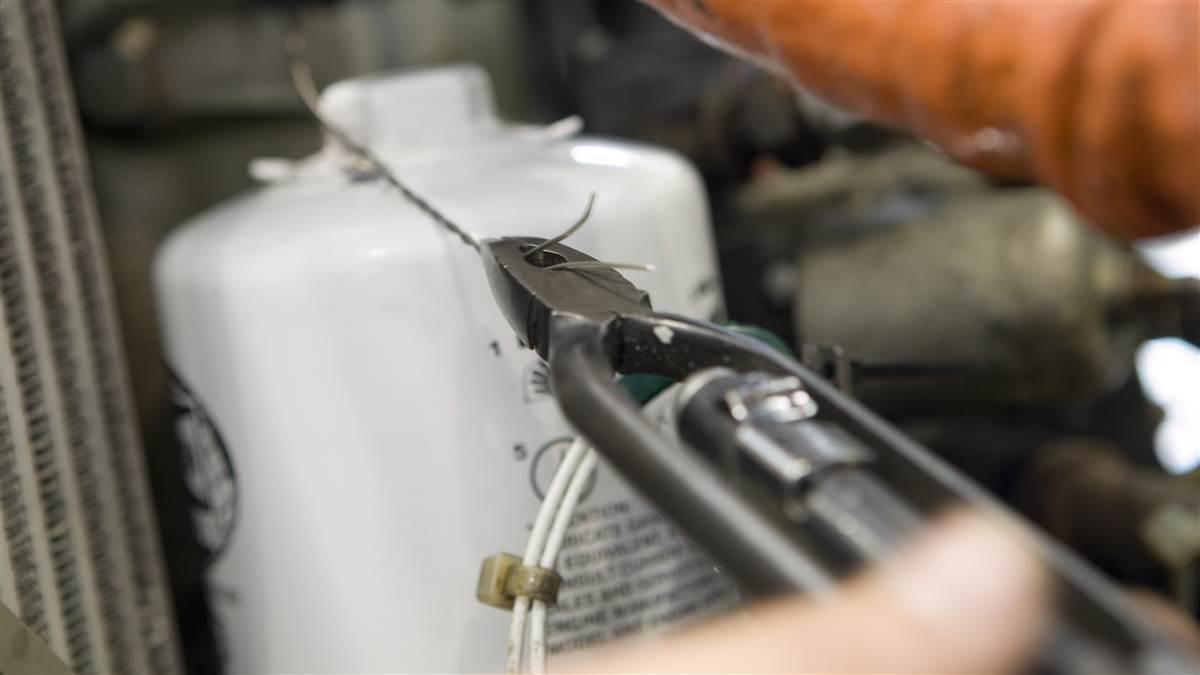 One of the most common questions the AOPA Pilot Information Center receives is, “May I perform this maintenance task on my airplane?” FAR 43, Appendix A, Paragraph C lists the items an owner can perform without A&P mechanic oversight. These items are very specific; if a task is not listed, assume it cannot be done. All should be accomplished with the service manual at hand (or the relevant pages) and the proper tools. Always assume it will take longer than estimated.
One of the most common questions the AOPA Pilot Information Center receives is, “May I perform this maintenance task on my airplane?” FAR 43, Appendix A, Paragraph C lists the items an owner can perform without A&P mechanic oversight. These items are very specific; if a task is not listed, assume it cannot be done. All should be accomplished with the service manual at hand (or the relevant pages) and the proper tools. Always assume it will take longer than estimated.
Advisory Circular 43-12A has good guidance on requirements and maintenance entries, and should be reviewed prior to performing any preventive maintenance. The original October 1983 document and the April 2007 change are available on FAA website (www.faa.gov).
Oil and filter: Both may be changed, and sump screens can be removed, cleaned, and reinstalled. Use the proper oil for the current or next season, and the same model filter you just removed. Replace the oil screen crush gasket; do
not reuse the old one. Safety-wire the filter and oil screen cap; 0.032 safety wire is
generally used.
Spark plugs: You can remove, replace, clean, and set the gap clearance. Use two wrenches to remove the wire harness and a deep socket to remove the plugs. Use anti-seize compound and torque properly, usually 35 foot/pounds. Turn the plug backward (counter-clockwise) first until the click is heard and felt, then install.
Bulbs, reflectors, and lenses of position and landing lights: No strobe lights! Loosen the housing first. Position lights are normally push-and-turn to remove; install the same way. Landing lights require removal of electrical connectors first, then reinstall on the new bulb, mount, and replace the housing.
Complete the logbook entry approving your work for return to service.
Craig Brown is an AOPA senior aviation technical specialist and A&P.
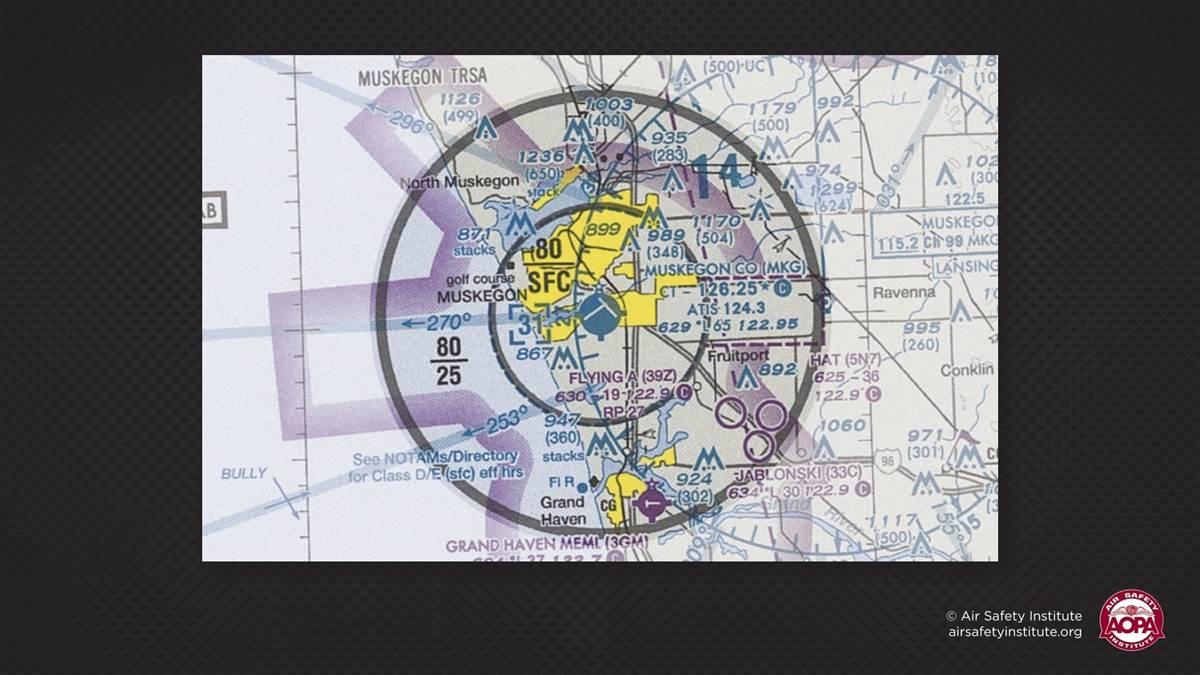
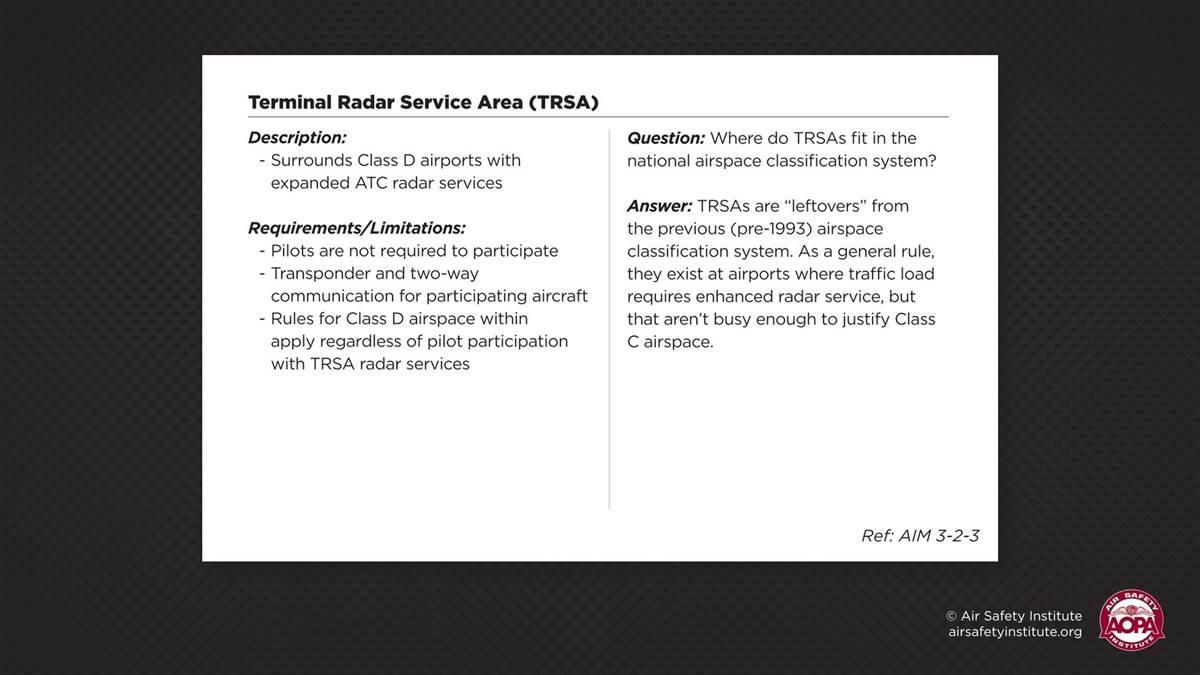 Who is pilot in command—you or the examiner?
Who is pilot in command—you or the examiner?

